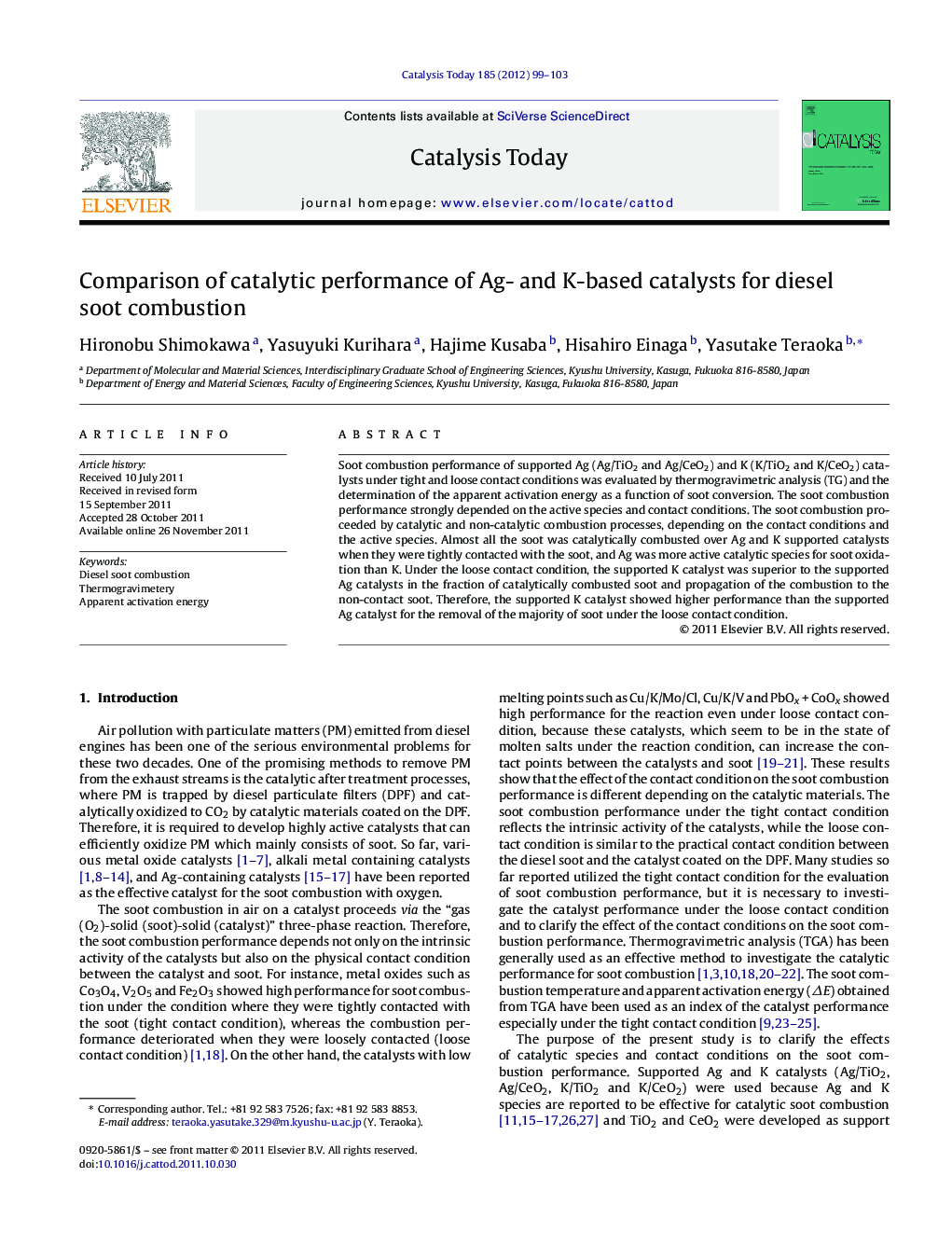| Article ID | Journal | Published Year | Pages | File Type |
|---|---|---|---|---|
| 55508 | Catalysis Today | 2012 | 5 Pages |
Soot combustion performance of supported Ag (Ag/TiO2 and Ag/CeO2) and K (K/TiO2 and K/CeO2) catalysts under tight and loose contact conditions was evaluated by thermogravimetric analysis (TG) and the determination of the apparent activation energy as a function of soot conversion. The soot combustion performance strongly depended on the active species and contact conditions. The soot combustion proceeded by catalytic and non-catalytic combustion processes, depending on the contact conditions and the active species. Almost all the soot was catalytically combusted over Ag and K supported catalysts when they were tightly contacted with the soot, and Ag was more active catalytic species for soot oxidation than K. Under the loose contact condition, the supported K catalyst was superior to the supported Ag catalysts in the fraction of catalytically combusted soot and propagation of the combustion to the non-contact soot. Therefore, the supported K catalyst showed higher performance than the supported Ag catalyst for the removal of the majority of soot under the loose contact condition.
Graphical abstractFigure optionsDownload full-size imageDownload high-quality image (152 K)Download as PowerPoint slideHighlights► Soot combustion with K- and Ag-based catalyst. ► Separation of catalytic and non-catalytic soot combustion by analysis of apparent activation energy. ► Ag is intrinsically more active than K. ► K is superior to Ag in complete removal of soot under loose contact condition.
